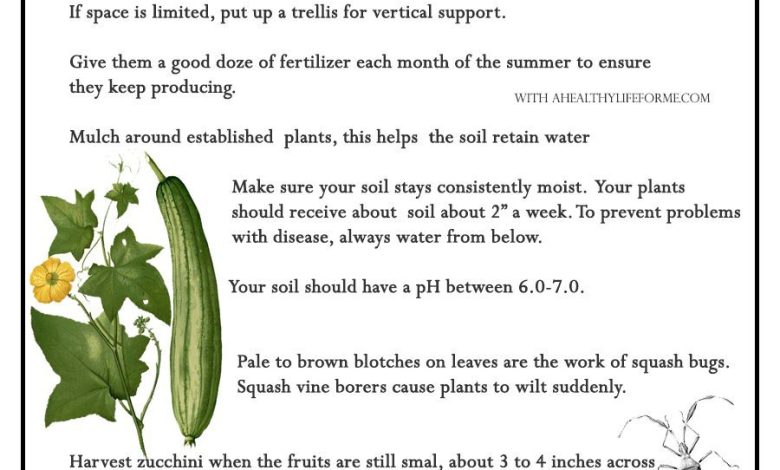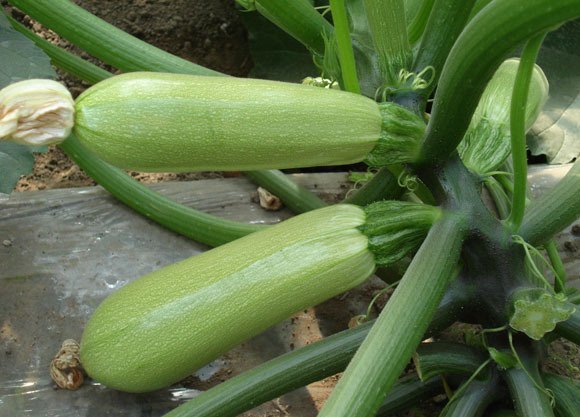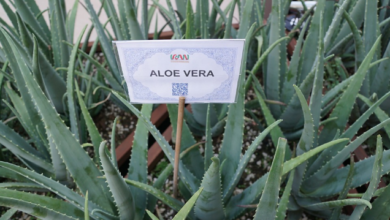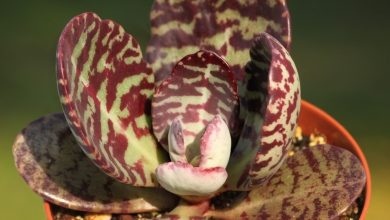Grow Zucchini in the garden step by step: Complete guide

Another post about growing vegetables in the organic garden! This time on the zucchini. There are many varieties, some larger, others smaller, light green, darker, yellow… So you have a lot to choose from, although the method of cultivation is more or less the same.

Cucurbita pepo is a “fruit” vegetable, a cucurbit that produces a juicy and quite large fruit that you probably know very well: the courgette. In any case, there are other parts of the plant that you can take advantage of to eat in salads, such as the young leaves or the male flowers, which are also edible.
If you haven’t tried it yet, start eating zucchini because this vegetable has a lot of health benefits, due to its vitamin and trace element content.
What is special about growing zucchini?
It is a creeping plant with very large leaves, so you will have to be careful that it does not become an invasive plant in your garden that «chokes» other vegetables.
You can also grow it in a kind of vine and let the fruits hang down so that they are easier to pick (as in the photo above), so you will take advantage of the ground space for other crops.
Tricks and curiosities about zucchini
The zucchini has monoecious flowers, this means that there are flowers with female sexual organs (pistil) and others with male sexual organs (stamens) and only the female flowers will give rise to the fruit of the zucchini once the ovule that is inside the pistil has been fertilized by pollen.
Climate and soil that courgettes need
It is a fairly demanding crop in terms of nutrients, so make sure the soil is well fertilized. Before planting, dig up the soil and incorporate well-rotted manure or compost.
As for the climate, it cannot tolerate temperatures below zero, so you should plant or transplant them when there is no risk of frost (optimum temperature: 18-28º C) and preferably in a sunny place, since it requires a lot of light.
Sow or plant zucchini?
We already saw in the post How to make a seedbed that with almost all the vegetables in the garden (also with zucchini) you can choose direct sowing or make a seedbed and then transplant. That will depend on your skill in the garden, the time you have and what you feel like doing. Especially if you do direct sowing, I recommend that you put a couple of seeds in case one does not germinate (after 10-15 days, if both have germinated, remove the weakest plant from each hole).
- Sowing time: late spring if done in seedbeds or under glass, and early summer if direct sowing outdoors.
- Planting depth: about 4 centimeters.
- Transplantation: early summer, 20 or 30 days after sowing in seedbeds.
- Sowing or transplanting distance: approximately 1 meter between plants in the same row and 1.2 to 2 meters between rows.
Favorable and unfavorable associations of zucchini with other garden plants
As we saw a few weeks ago in the post Crop associations: 6 good and four bad, it is not recommended to put zucchini together with other plants of the same family (cucurbits such as squash, cucumber, melon, chayote, etc.) neither with eggplant nor cauliflower.
On the contrary, it is compatible with basil, onions, corn or legumes such as peas or beans.
Irrigation
Zucchini is quite demanding when it comes to watering, so you should give it frequent and abundant watering.
A trick: gradually increasing the watering a week before harvesting helps the fruit grow more and better, reaching maximum production.
Zucchini pests and diseases
The Cucumber Mosaic Virus or the Zucchini Yellow Mosaic are its most common diseases and its symptoms are yellow spots on the leaves in the form of dots (mosaics) that later turn into necrosis. You must be very careful and eliminate the affected plants so that the virus is not spread since this type of disease has no solution (they are not cured) so you could spoil the entire harvest of the garden if other plants such as tomatoes, peppers are infected, spinach…
It is important to prevent aphids since this insect is a transmitter of these viruses and can also be a pest of the zucchini plant. Other pests or diseases that can affect it are whiteflies, red spiders, thrips, powdery mildew fungus or nematodes (see the “Pests and diseases” category to find out how to prevent and control them).
Cultivation work
So that they do not spread throughout the garden, you can prune the plants a little and/or guide them (especially if they are creeping varieties).
Padding or mulching is recommended to prevent the leaves and fruits from getting wet and fungi from appearing, to conserve the maximum possible amount of water inside the substrate and to maintain a more constant temperature.
Pollination can be helped so that the plants are more productive by transporting the pollen from the male flowers to the female ones, as you can see in the video at the beginning of the post.
When and how to harvest zucchini
Pluck them by turning the zucchini until it comes off or by cutting with a knife at a distance of 2-3 cm from the fruit.
They are harvested from mid-summer when 30 to 90 days have passed after transplanting. They can be harvested more tender or more mature, depending on the taste of each one, although it is not advisable to leave them in the bushes for an excessive time because if they are uprooted, the production of other fruits will be favored.




![Photo of Planting a Pear Tree: [Care, Irrigation, Soil, Pests and Diseases]](https://www.complete-gardening.com/wp-content/uploads/2022/08/planting-a-pear-tree-care-irrigation-soil-pests-and-diseases-390x220.jpg)